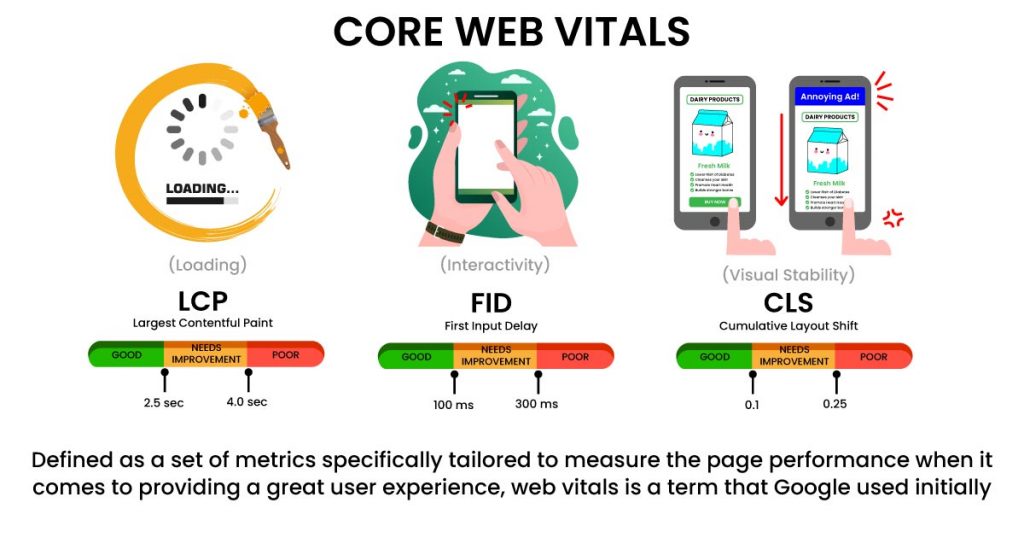Defined as a set of metrics specifically tailored to measure the page performance when it comes to providing a great user experience, web vitals is a term that Google used initially. It focuses on the behind-the-scenes metrics that can be measured and not clicks and impressions.
These metrics consist of 3 factors: interactivity, content loading speed, and visual stability. Recently, Google has been working to up algorithm’s game in evaluating small details. Therefore, they must look at the more minor and critical factors in an overall framework.
In a nutshell, core web vitals are what bring out your website’s strengths and weaknesses.
Core web vitals are as follows:
1. Loading (also known as Largest Contentful Paint)
It measures the time it takes for all elements on a page to become visible as rendered content or as meaningful paint. For example, if all the text is visible, but the images aren’t, it is considered meaningful paint rather than loading all elements on a page.
Google utilizes LCP to measure a page’s performance and based on the result. They rate the baselines accordingly to identify what you should focus on. To put it simply, LCP is a way to tell how your users perceive your site. If you have a smaller LCP compared to other competitors, Google will assume that your user experience will be pretty much better than theirs.
Depending on the page level, your page’s content needs to load not more than 2.5 seconds. If not, it’s considered a slow page. But the score will still rely on the type of page. For instance, for a product page, the product image will be considered one of the contents that Google will use to determine the loading time.
Another critical point is that Google will only focus on the part of the page that matters regarding the content. So, for example, if you have a video player on your website, but it’s not playing, it is useless for Google, and they will not factor that metric into your LCP score. The same thing would be running JavaScript code or any events that don’t work.
2. Interactivity
3. Visual Stability
Visual stability is about the rate at which the pixels change on a page. It also measures how direct the user’s gaze follows the changes in pixels. Low visual stability means that once you look at a page, it will change rapidly and make it hard for your eyes to follow it. This negatively affects your cognitive load, and this will affect your interaction with these changes.
Though these three factors are deemed as critical factors for Google, they are still somehow subjective because there is no set measurement.
Get in Touch
Do you find this article helpful? For more information or questions, click the button to send us a message.
If you have any comments or suggestions, feel free to share them with us, too!

